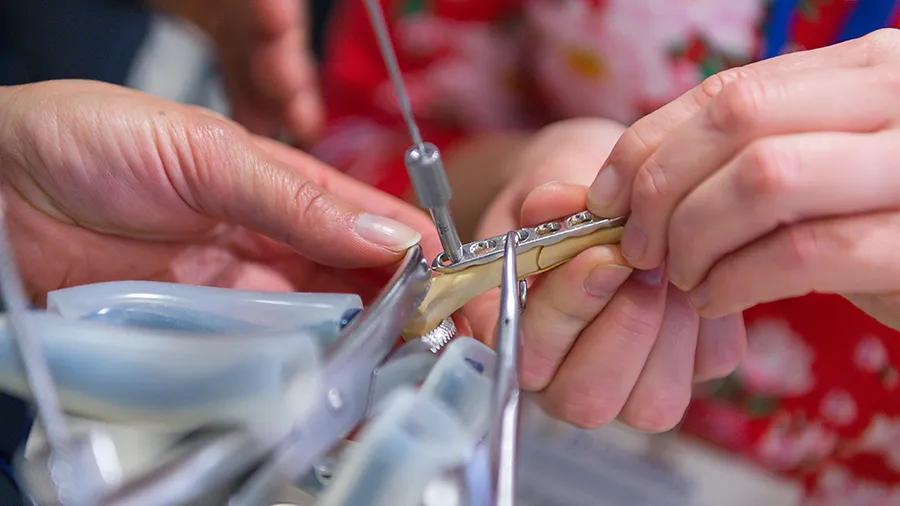Arthrodesis with plates
1. Principles/General considerations
Complete luxation of the atlantoaxial articulation, resulting in displacement of the dens so that it lies ventral to the atlas, is very rare. For a complete luxation to develop there needs to be complete disruption of the ligamentous attachments of the dens. Complete luxations are treated nonsurgically.
Subluxation of the atlantoaxial articulation, without fracture of the dens, is a rare condition seen in young horses up to 3 years of age. The condition can be congenital in origin or the result of a traumatic incident. Plates are used to perform arthrodesis of C1-C2 as treatment for subluxations.
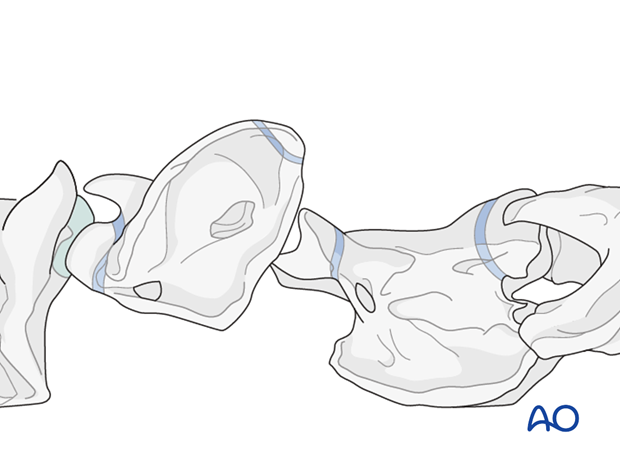
On plain radiographs, there is malalignment of the atlas and axis.
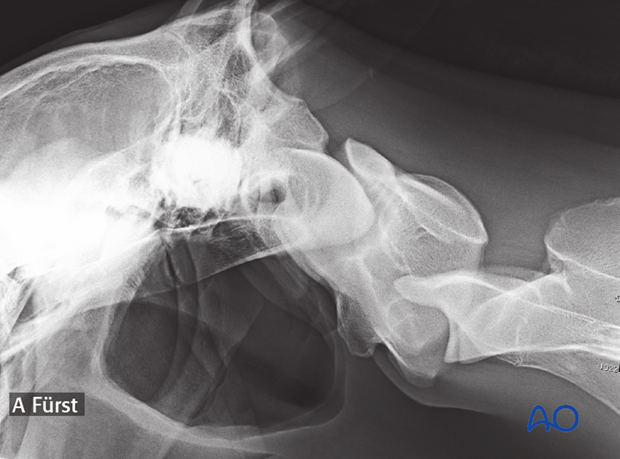
CT study showing the rotational (left) and dorsoventral (right) malalignment between C1 and C2.
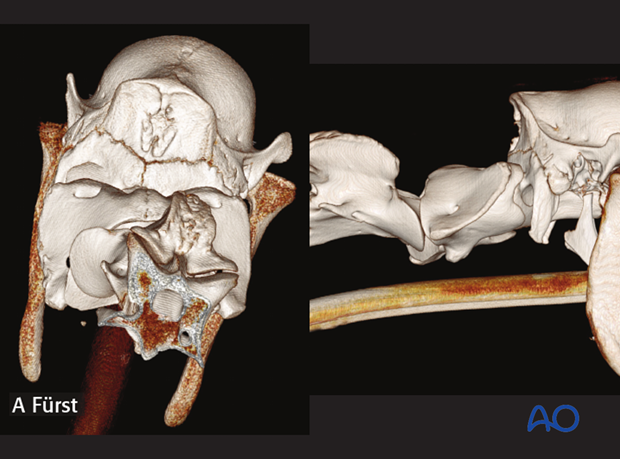
2. Preparation and approach
This procedure is performed with the patient positioned in dorsal recumbency through the ventral midline approach to the cervical spine.
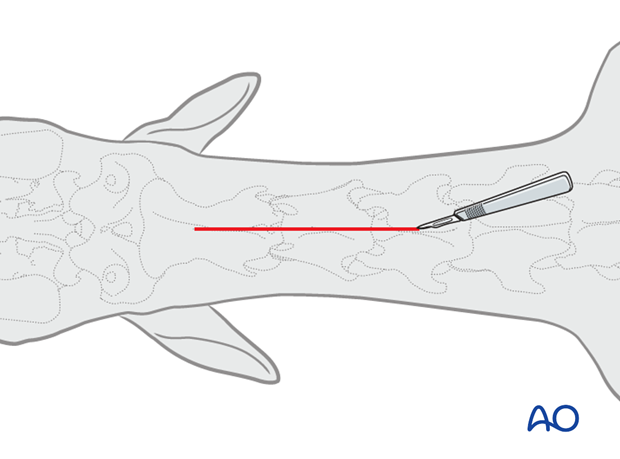
3. Reduction
Preparation of the bone
The ventral spinous process of the body of C2 is flattened slightly using a curved osteotome and bone rongeur.
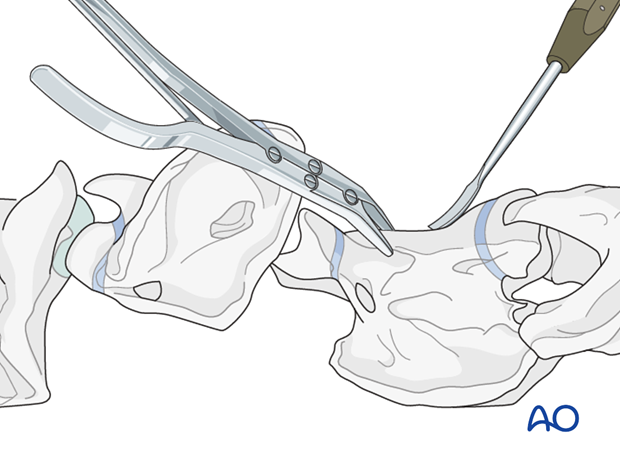
After exposing the ventral surfaces of the atlas and axis, the alignment of the vertebrae is corrected and maintained with bone-holding forceps.
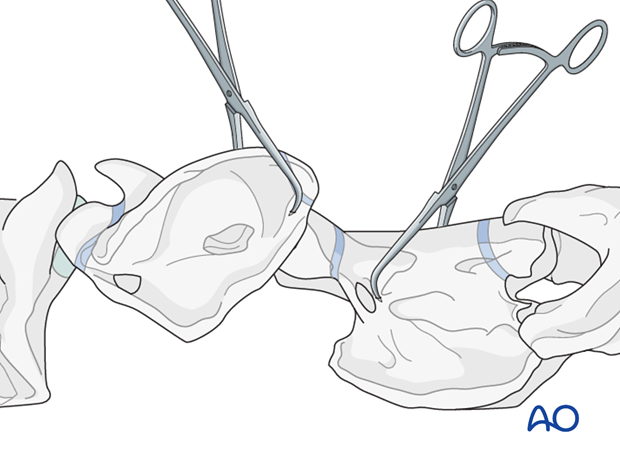
4. Fixation
Plate selection
The use of a locking compression plate (LCP) is preferred for fracture fixation of the vertebrae. According to the size of the patient, a small or broad 3.5/4.0 or 4.5/5.0mm LCP is used.
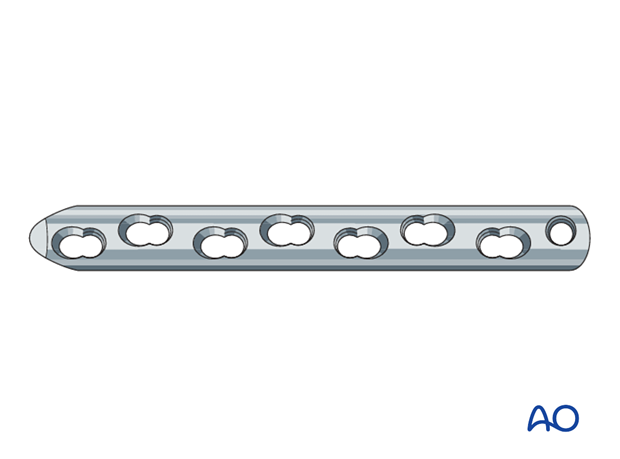
Alternatively, a human distal femur plate can be used to improve the arthrodesis of C1-C2.
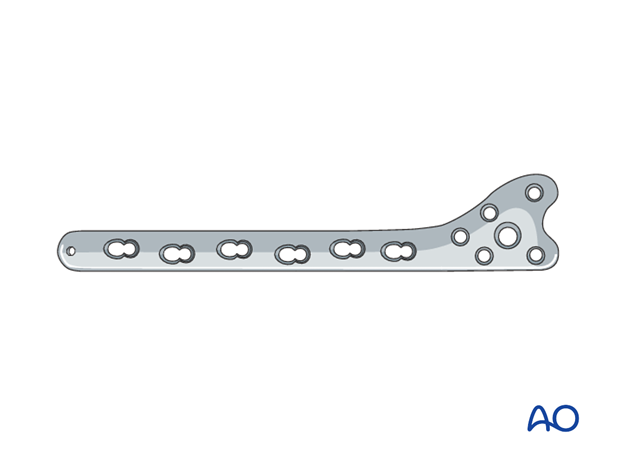
Plate preparation
Minimal plate bending is needed.
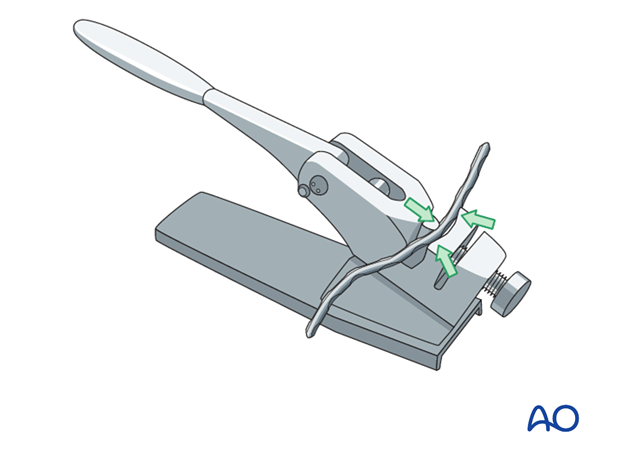
Plate application
With the reduction forceps in position, the appropriately sized plate is applied to the ventral aspect of C1 and C2.
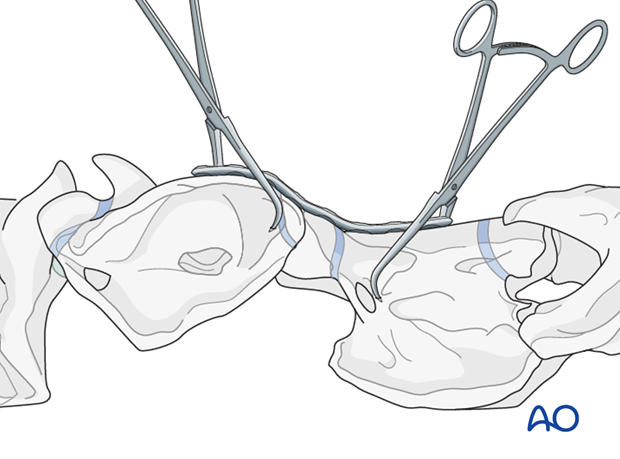
One cortex screw is inserted into each vertebra in load fashion. The correct length of the screws is determined with the help of fluoroscopy.
Note: Attention must be paid not to damage the spinal cord.
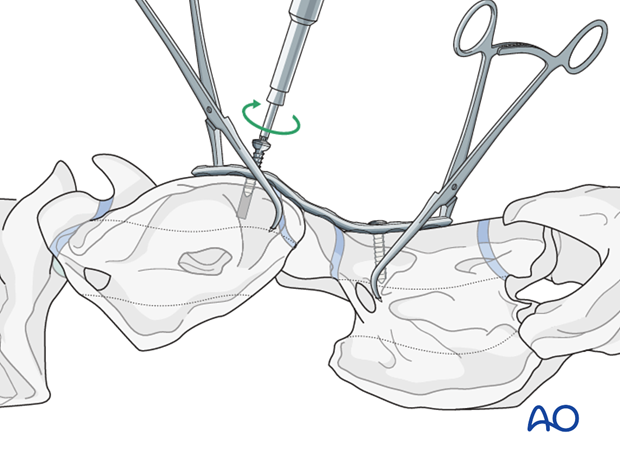
The remaining holes are filled with locking-head screws.
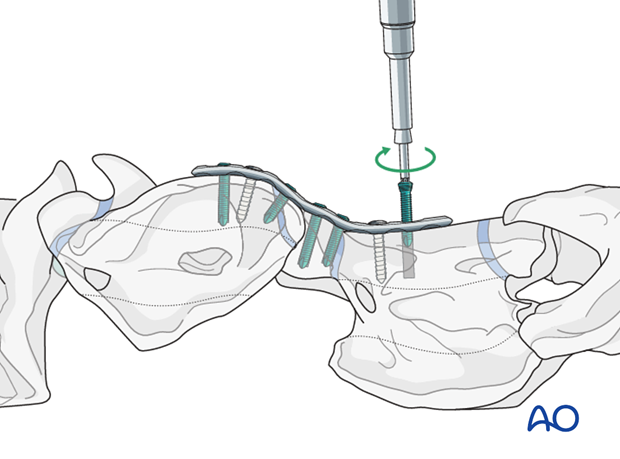
5. Closure
The muscles, subcutaneous tissue and the skin were closed in a continuous fashion. A close active drain can be placed at the level of the plate, exiting the skin near the incision and sutured to the skin.
A stent bandage is applied, and covered with an adhesive barrier drape to keep the incision clean and dry during recovery.
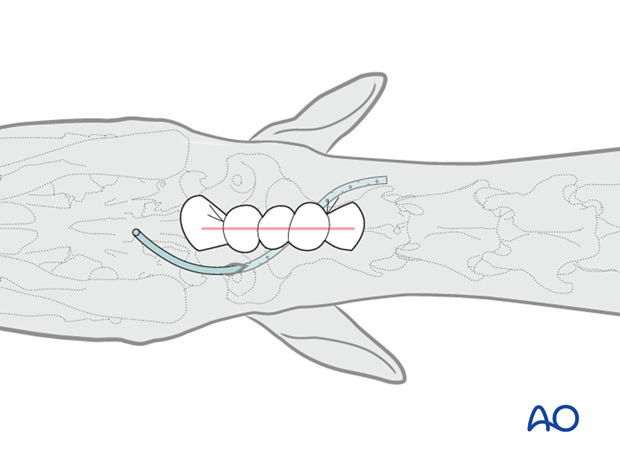
6. Case example
2-year-old patient with a subluxation in C1-C2.

The subluxation was treated using a human distal femur plate to perform an arthrodesis in C1-C2. The screws didn't engage enough bone and the fixation became unstable after recovery.
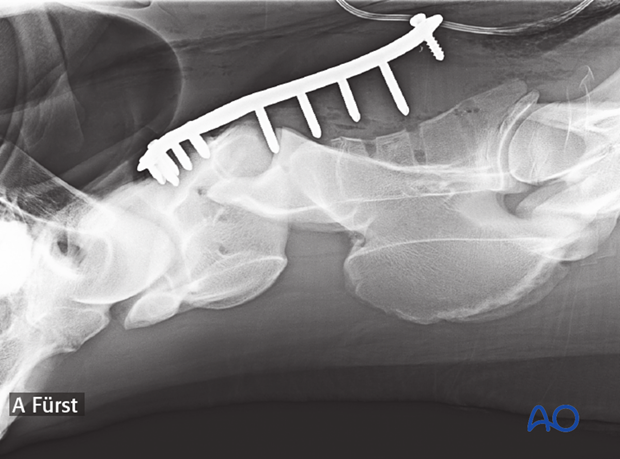
During the second surgery longer screws were used, which resulted in a much more stable fixation.
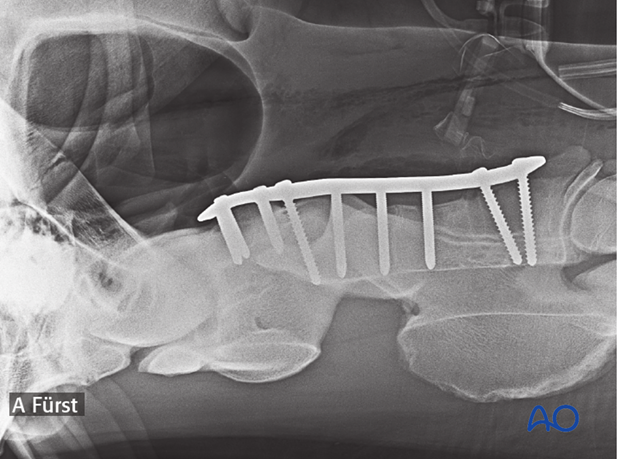
7. Aftercare
Following surgery, antibiotics and NSAIDs are routinely administered for 3 days. If indicated, they need to be continued.
Routinely follow up radiographs are taken immediately after surgery and after 2 and 4 months.
The rehabilitation protocol includes 2 months of stall confinement, followed by 1 month of hand-walking, and 2 months of progressive exercise.
Only when the ataxia has completely disappeared, the horse can return to training or other activities.
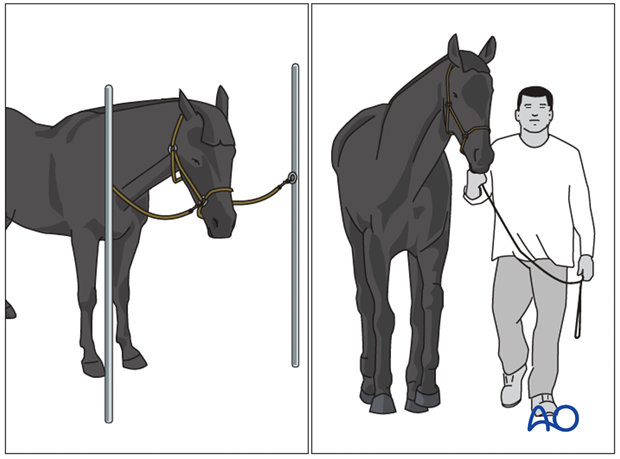
Implant removal
There is no need for implant removal, except in cases of implant loosening or surgical site infection.
